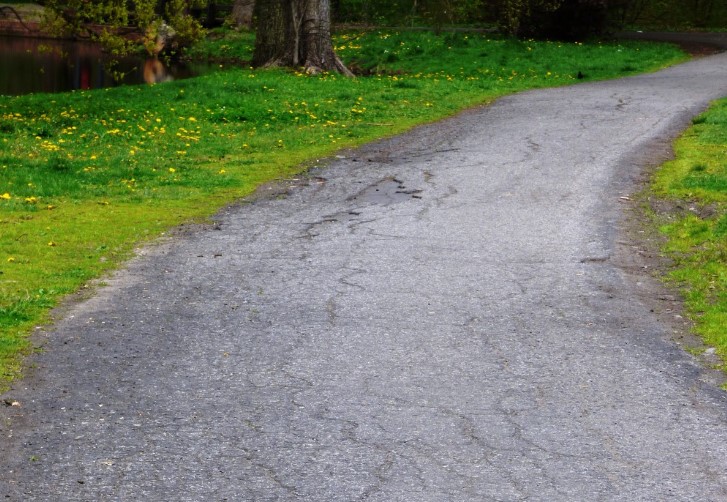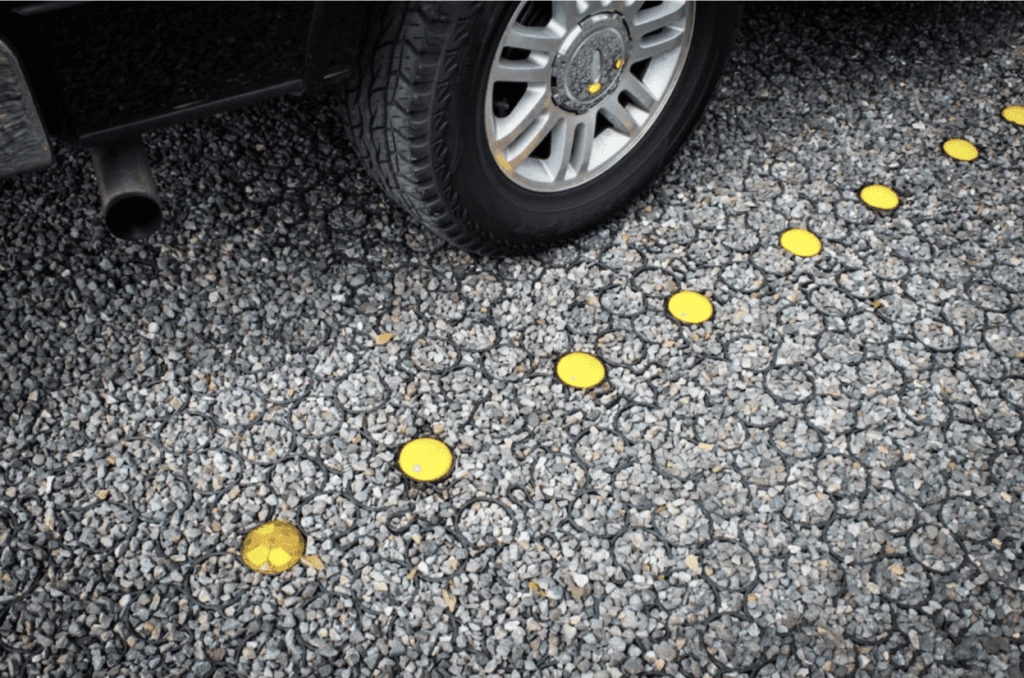Asphalt is the single most common paving material used across the world. It’s a relatively cheap material and although not eco-friendly, it is somewhat durable and effective as a paving material. One of the biggest defining characteristics of asphalt, though, is the amount of maintenance that it requires.
Asphalt maintenance is an extensive and painstaking process with a handful of steps involved. In case you’re in charge of maintaining asphalt, let’s take a look at some of the crucial steps involved and what a better, more durable alternative may be.
Maintaining Asphalt Pavement

1. Painting Lot Lines
Asphalt maintenance consists of a few different things. The most basic maintenance you’ll have to perform is the repainting of lot lines. The yellow, white, and/or other-colored lines are used to mark parking spots and other things on asphalt.
2. Sweeping
Sweeping is another type of maintenance that is typically performed before more extensive repairs are about to take place. You might also spray down asphalt pavement with a hose to remove dirt.
3. Repairing Potholes and Cracks
Repairing cracks and potholes is a type of minor maintenance that you may need to perform on asphalt pavement. This involves filling the cracks and/or potholes with fresh asphalt and letting it dry so that there are no open gaps in the surface of your asphalt pavement.
Once damage has already occurred to your asphalt pavement, the only choice is to repair the damage with minor repairs like filling cracks and gaps.
4. Sealcoating
One of the most important parts of asphalt maintenance is using a seal coat on the surface. This is so that water never has the chance to penetrate it to begin with and cause these minor damages.
Sealcoating generally needs to be done once every 3-5 years or so and is a rather quick process. The asphalt is swept and cleaned first, before one or more coats of sealant are applied to the surface of the pavement and allowed to dry.
This sealant provides a barrier between the surface of the asphalt pavement and any water that might penetrate it. Once the seal coating wears off, the asphalt surface is vulnerable to moisture intrusion.
5. Resurfacing
Resurfacing is the most extensive type of asphalt repair and generally involves the same process as repairing cracks and potholes, except it’s done on the entire surface of the asphalt.
Resurfacing is done when damage done to the asphalt surface has been very extensive, or you’ve gone 10 years without resurfacing. It’s recommended that you resurface asphalt about once every decade or so. After resurfacing, you’ll need to add more sealant and more lot lines as well.
The Disadvantages of Asphalt
The disadvantages of asphalt are many. It’s not very eco-friendly, for starters. It’s also impermeable in most cases. This means that you need to include expensive drainage systems for parking lots and asphalt driveways won’t be effective at draining stormwater.
Asphalt also gets sticky in hot temperatures and is not as durable as a material like permeable plastic pavement, for example. Asphalt breaks down rather quickly, especially with regular use. Asphalt driveway maintenance can be costly and time-consuming as well.
A Superior Alternative to Asphalt Pavement

If you’re wondering about a better alternative to asphalt paving and maintenance, you don’t need to look any further than permeable plastic pavers from TRUEGRID. Unlike asphalt, TRUEGRID pavers require almost zero maintenance throughout their entire lifetime (up to 60 years). They suffer virtually no damage from the typical factors like traffic, wind, rain, UV exposure, tree roots, and anything else you can think of.
In fact, both TRUEGRID PRO LITE and TRUEGRID PRO LITE PLUS are strong enough to handle the weight of a monster truck driving off a ramp and landing on them without breaking, and that’s before they’ve even been filled with gravel.
Permeable pavers are used to trap gravel and lock it into place over a 6 inch – 8 inch sub-base of gravel, and create a paved surface that is 100% permeable and capable of handling even the heaviest of rainstorms.

The installation process is incredibly quick and can usually be completed in a day or less, depending on the scope of the project. The advanced level of permeability means that you can do away with most other forms of stormwater drainage, to save both time and money in the process.
TRUEGRID pavers are made from 100%-recycled plastic, which makes them one of the most eco-friendly paving products on the planet. They use very little heavy equipment during installation and have a low carbon footprint compared to other materials like asphalt and concrete.
Let TRUEGRID Solve Your Asphalt Maintenance Concerns
Asphalt maintenance is costly, time-consuming, and not very environmentally-friendly. If you want a superior paving option to asphalt that’s durable, 100%-permeable, eco-friendly, sturdy, and aesthetically pleasing, give TRUEGRID a call today to contact a pavement professional who can help you get started.



